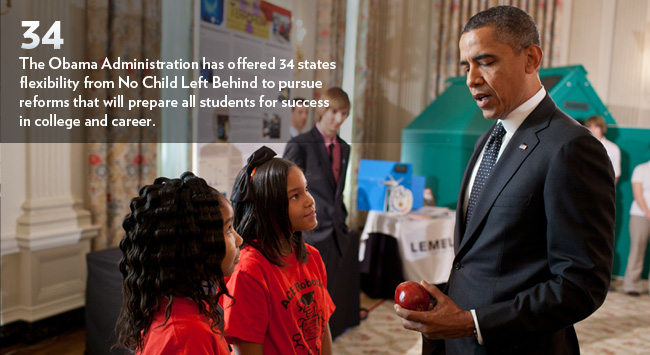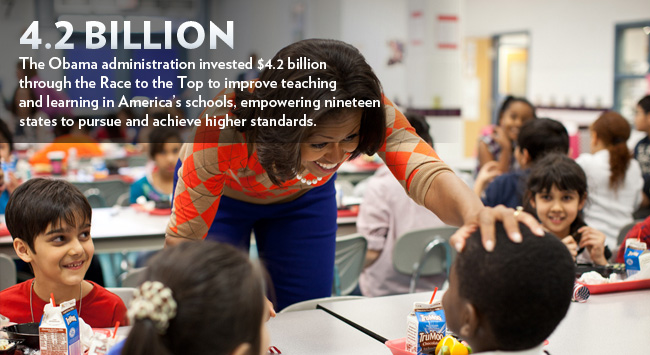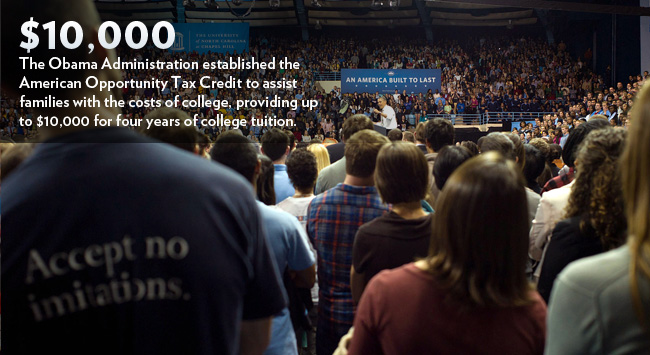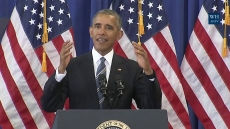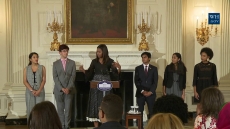EDUCATION
“If we want America to lead in the 21st century, nothing is more important than giving everyone the best education possible — from the day they start preschool to the day they start their career.”
Building American Skills Through Community Colleges
"In the coming years, jobs requiring at least an associate degree are projected to grow twice as fast as jobs requiring no college experience. We will not fill those jobs – or keep those jobs on our shores – without the training offered by community colleges.” – President Barack Obama
In an increasingly competitive world economy, America’s economic strength depends upon the education and skills of its workers. In the coming years, jobs requiring at least an associate degree are projected to grow twice as fast as those requiring no college experience. To meet this need, President Obama set two national goals: by 2020, America will once again have the highest proportion of college graduates in the world, and community colleges will produce an additional 5 million graduates.
As the largest part of the nation’s higher education system, community colleges enroll more than 6 million students and are growing rapidly. They feature affordable tuition, open admission policies, flexible course schedules, and convenient locations. Community Colleges are particularly important for students who are older, working, or need remedial classes. Community colleges work with businesses, industry and government to create tailored training programs to meet economic needs like nursing, health information technology, advanced manufacturing, and green jobs.
Last July, President Obama proposed the American Graduation Initiative to invest in community colleges and help American workers get the skills and credentials they need to succeed. The Health Care and Education Reconciliation Act includes $2 billion over four years for community college and career training. These resources will help community colleges and other institutions develop, improve, and provide education and training, suitable for workers who are eligible for trade adjustment assistance. The initiative will be housed at the Department of Labor and implemented in close cooperation with the Department of Education. With these resources, community colleges across the country could:
- Work with businesses: Colleges could build partnerships with businesses and the workforce investment system to create career pathways through which workers will earn new credentials and promotions through step-by-step, worksite education programs that build essential skills. Colleges will work closely with employers to design training that is relevant to the local labor market and likely to lead to employment and careers.
- Create education partnerships: Colleges could work with other educational institutions to expand course offerings and promote the transfer of credit among colleges.
- Teach basic skills: Colleges could improve remedial and adult education programs, accelerating students’ progress and integrating developmental classes into academic and vocational classes.
- Meet students’ needs: Colleges could offer their students more than just a course catalog through comprehensive, personalized services to help them plan their careers, stay in school, and graduate.
- Develop online courses: Colleges could create open online course materials such as interactive tutors, simulations, and multimedia software that can help students learn more, and learn better, in less time.
This program would complement President Obama’s broader agenda for higher education, including nearly doubling funding for Pell grants over three years and tripling the largest college tax credit, now known as the American Opportunity Tax Credit. At this time of economic hardship and uncertainty, the Administration’s agenda will build the highly skilled workforce that is crucial for success in the 21st century.


